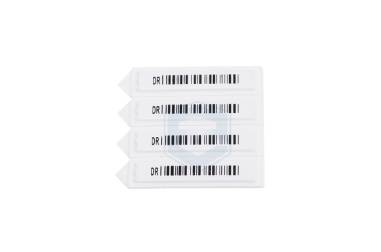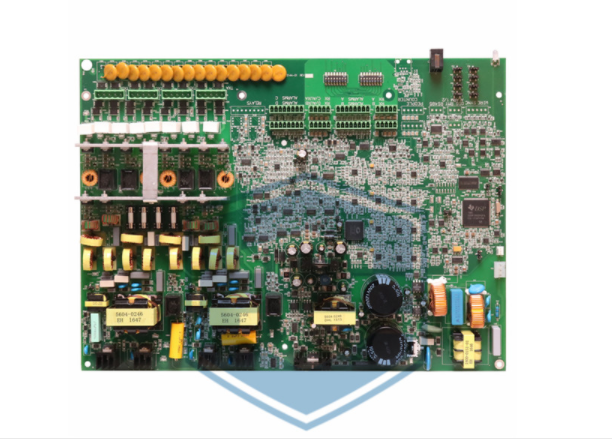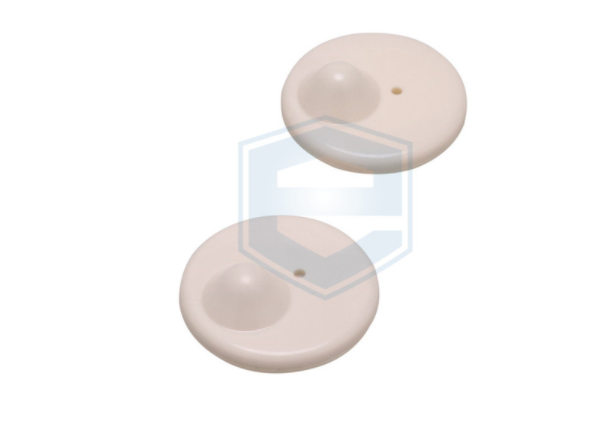1. EAS anti-theft alarm equipment consists of three parts, anti-theft alarm tag, nail remover and degausser, and anti-theft alarm.
2. When a product with an anti-theft alarm tag that has not been demagnetized or nailed by the cashier passes through the EAS anti-theft alarm antenna, an audible and visual alarm will be issued on the spot to remind the duty to prevent damage and deal with it.
3. EAS anti-theft alarm equipment is used to prevent theft of goods and play a threatening role at the same time.
1. Hard tags: Generally used for large items, the same product has a uniform and obvious staple position, which is convenient for cashiers to use the nail remover to recycle and reuse. Hard tags include: small hammer, tag with rope, milk powder cap/buckle, wine bottle cap/buckle, dry goods clip, protective box, etc.
1.1 Small hammer: generally used in clothing, textiles, shoes, bags, strollers, facial cleansers, etc., the position is uniform when used, and the soft 100 category is nailed to the price tag;
1.2 Use rope tags: used for the protection of thermos cups, tennis rackets, pots, bicycles, etc.
1.3 Milk powder caps/buckles: Milk powder caps are used for canned milk powder with a price of more than 300 yuan, and milk powder buckles are used for others;
1.4 Bottle cap/buckle: used for high unit price liquor, foreign wine and red wine, or olive oil, etc.;
1.5 Dry cargo folder: generally used for bagged dried fruits;
1.6 Protective box: used for the protection of lipstick, cosmetics, razors, batteries and other commodities;

Soft Labels
2. Hard label recycling: The cashier will store the removed Hard Labels in the "magnetic buckle recycling rack" of the cashier line before being laid off, and place them separately. If the class group returns the goods, the products that need to be demagnetized must be confirmed with the loss prevention, and the label will be demagnetized under monitoring
3. Soft Labels: mainly used for small commodities, high-loss commodities that can be demagnetized by the cashier. Do not cover the label on the surface of iron or tin foil products. If it is used for special commodities, such as fresh food, you must notify the cashier class in advance. Good demagnetization, no need to recycle and cannot be reused.
3.1 Soft labels include ordinary soft labels, pointed labels and water labels. Different label coverage should be selected according to different attributes of the goods.
3.2 Inventory and storage: Under normal circumstances, the inventory should be kept for more than one month, and should be kept away from magnetic objects and demagnetizers.
1. Test Equipment
The store’s loss prevention method uses hard tags and soft tags to test the loss prevention alarms every day. Before going to work every morning, select the soft tags and bring them to the middle of the door god for testing to ensure that the door god can normally alarm, and take the tag to the middle of the door god , Move closer to both sides at a constant speed, and the distance in the middle without alarm is the blind spot distance.
1.1 Test the soft label: Pass through the middle of the door god with the label. If the blind area is greater than 20cm, immediately confirm with the duty loss prevention;
1.2 Test hard tags: Pass through the door god with the tag, if there is a blind spot, immediately confirm with the duty loss prevention;
1.3 Test tagged items: Pass the item through the door god, if the blind area is greater than 20cm, there is no alarm and immediately confirm with the duty loss prevention.
1.4 Note: After the newly ordered consumables arrive in the store, they should take samples to the door god for testing to confirm the integrity of the consumables.
2. Equipment maintenance
2.1 Door God: The power of EAS Door God must be turned off after the store is closed every day to extend the service life of the equipment.
2.2 Degaussing device: Do not place hard tags on the degaussing device for a long time; the surface of the degaussing board is glass, and it is not allowed to knock or throw the goods on the degaussing board to avoid damage to the panel. The degaussing device is an electronic product and no water can enter the surface. Water stains should be wiped dry immediately with a rag; the cashier should turn off the degausser when getting off the machine.
2.3 Maintenance providers: EAS maintenance providers need to conduct maintenance inspections on store equipment every quarter. In case of major festivals such as National Day, Mid-Autumn Festival, Spring Festival, etc., equipment inspections are required one month in advance to ensure the safe operation of store equipment without exception , Stores need to archive and keep the records of maintenance business patrols, and headquarter patrols are used as inspection items.

Basic Approach to Preventing Retail Business Losses
Apr. 16, 2022
What You Need to Know about EAS Security Tag Alerts
Apr. 06, 2022